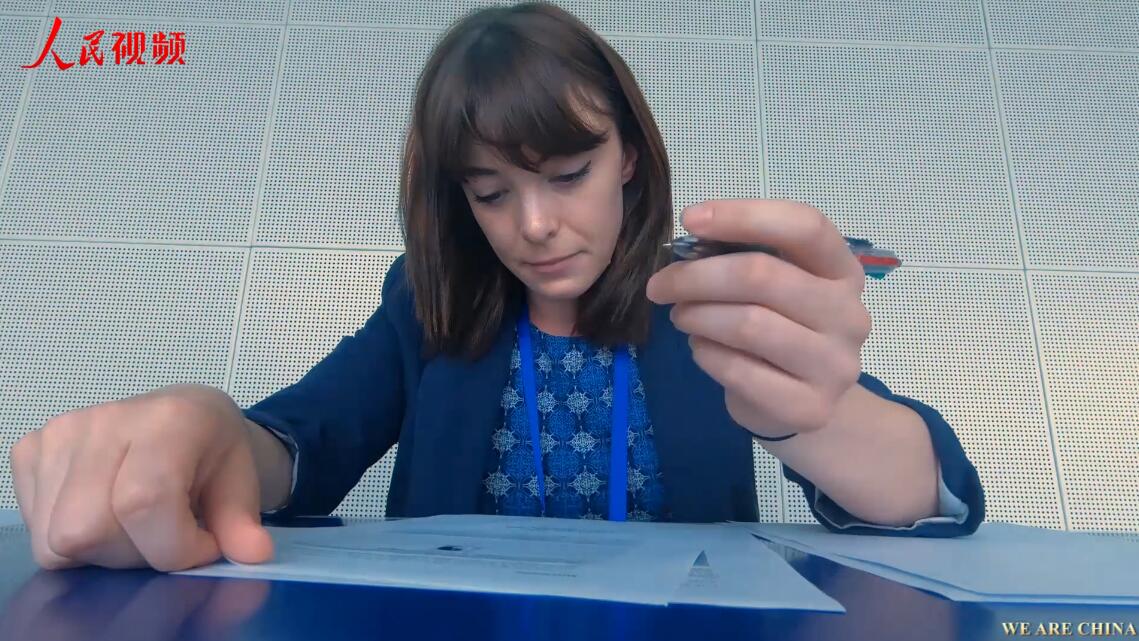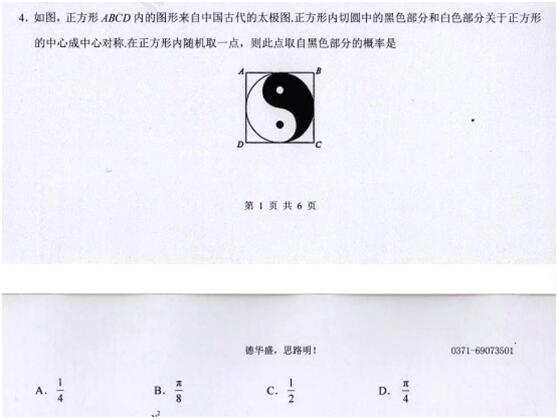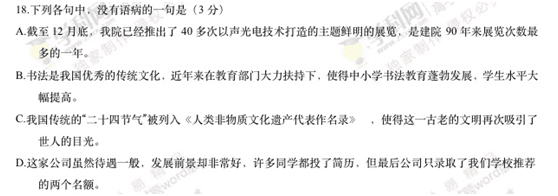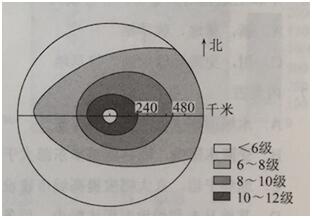

Over the last two days, 9.75 million students descended upon campuses across the country for what is the most important exam of their young lives – the gaokao. Unlike schools in the west, this one exam will define the students' life, as their gaokao score will be the sole deciding factor for universities to determine if they’re worthy or not. Places in universities are sought after, and there’s stiff competition between classmates as only one in 20 students will get into a top university.
With odds like that, it’s no wonder that there was a tense atmosphere when I visited Beijing No. 2 High School the morning before the gaokao began. Students sat, cramming as much information in before it was too late, as parents fretted that they had drank enough water and had their pencil cases to hand.
>>>Related Reading: China’s college entrance exam: national obsession and idealistic evolution
As parents waved goodbye to their children, walking to the examination hall to meet their fate, the atmosphere stayed just as tense as the street fell silent. Had these parents done enough? Had their children studied hard enough? Only time would tell. As volunteers brought water and newspapers to those awaiting news from inside, I can’t help but wonder if this pressure is really necessary for everyone involved.

Instead of just discussing the gaokao, I wanted to check out some of the questions and give it a go, to see if I would ever make it into a top Chinese university. My colleagues put together some multiple choice questions, and I roped Alvero and Mauro from different People’s Daily departments to give it a try, too.
The questions were tough. Not only am I terrible at math, but I also have a limited knowledge of Russian and Chinese history, which is where this test paper focused.
After calculating my score, it turns out that I somehow got 72%, which is a B. Although it could have been a lot worse, there’s no way I’d get into a top university with that. Not to mention that these were only a few multiple choice questions and we haven’t even touched on the long essays and open ended questions that are so much more intellectually demanding. From seeing the type of questions in the exam along with meeting the students and parents that have spent so long preparing for these two days, it’s obvious that this isn’t only a test of diligence, but also one of endurance. Some of the students I met on Wednesday had been studying for years, so hats off to all the students walking out of their gaokao exam today.
I can only imagine the intense relief to walk out of the hall knowing it’s over, now all these teenagers can do is wait for the results and enjoy a brief period where they don’t have to revise or worry about homework –not until university begins in the fall at least.
If you want to try some of the questions I answered in my test, you can check them out below. Let us know in the comments how you do!
>>>Related Reading: Essay topics of China’s university entrance exams: Would you pass the test?
English Reading
Please read the following passage carefully and choose the best option from the multiple choice answers.
For a long time Gabriel didn’t want to be involved in music at all. In his first years of high school, Gabriel would look pityingly at music students, 36 across the campus with their heavy instrument cases. 37 at school for practice hours 38 anyone else had to be there. He swore to himself to 39 music, as he hated getting to school extra early.
__40___, one day, in the music class that was __41__of his school’s standard curriculum, he was playing idly (随意地)on the piano and found it ____42___to pick out tunes. With a sinking feeling, he realized that he actually __43__doing it. He tried to hide his __44__pleasure from the music teacher, who had __45__over to listen. He might not have done this particularly well, __46__the teacher told Gabriel that he had a good ___47__ and suggested that Gabriel go into the music store-room to see if any of the instruments there __48__ him. There he decided to give the cello(大提琴)a __49__. When he began practicing, he took it very __50__. But he quickly found that he loved playing this instrument, and was __51__to practicing it so that within a couple of months he was playing reasonably well.
This __52__, of course, that he arrived at school early in the morning, __53__ his heavy instrument case across the campus to the __54__ looks of the non-musicians he had left __55__.
36.A. travelling B. marching C. pacing D. struggling
37. A. rising up B. coming up C. driving up D. turning up
38. A. before B. after C. until D. since
39. A. betray B. accept C. avoid D. appreciate
40. A. Therefore B. However C. Thus D. Moreover
41. A. part B. nature C. basis D. spirit
42. A. complicated B. safe C. confusing D. easy
43. A. missed B. disliked C. enjoyed D. denied
44. A. transparent B. obvious C. false D. similar
45. A. run B. jogged C. jumped D. wandered
46. A. because B. but C. though D. so
47. A. ear B. taste C. heart D. voice
48. A. occurred to B. took to C. appealed to D. held to
49. A. change B. chance C. mission D. function
50. A. seriously B. proudly C. casually D. naturally
51. A. committed B. used C. limited D. admitted
52. A. proved B. showed C. stressed D. meant
53. A. pushing B. dragging C. lifting D. rushing
54. A. admiring B. pitying C. annoying D. teasing
55. A. over B. aside C. behind D. out
Mathematics
1. As shown in the figure, within the square ABCD is the Tai Chi figure of ancient China. The figure is the inscribed circle of the square and the black and white parts are symmetrical to the center of the square. If you take a random point within this square, the probability that this point is taken from the black part is?

2.

A. -5
B. -5 or 3
C. 3
D. 5 or -3
Chinese


Geography
1. Fig. 1 is a diagram showing the distribution of sea surface wind force on a typhoon in China. Read the picture and answer second questions.

1. The typhoon…
A. is formed in the sea of the Yellow Sea in summer
B. the range of less than 6 is the strongest wind
C. air pressure at the lowest point will have maximum wind speed
d. The wind direction of the northwest side is the north wind.
2. Big data show that the change of urban vehicle traffic can reflect the pace of urban life to a certain extent. The percentage of motor vehicle flow refers to the proportion of motor vehicle traffic in a certain period of time. Fig. 5 shows the change of motor vehicle traffic volume on a working day. Read the picture and answer first questions.

The time zone of the city is
A. west two zone B. West ten zone C. East ten area D. east two area
History
1. Literature and art are products of the times in which they are created that also reflect the spirit of those times. Choose the correct pair below:
A. Dramatic changes in society following the Industrial Revolution – rise of Modern Art.
B. Intensified social conflicts in western capitalist countries in 19th century – rise of Realism
C. Spiritual crisis in the West post WWII – birth of Impressionism
D. Prosperity of Western capitalism after WWII – birth of Romanticism
2. What happened in Soviet Russia in the 1920s
A. Private enterprises began to emerge
B. State-run businesses had more autonomy
C. The government prohibited the sale of food
D. Peasants were active in collective farming
Answers:
Reading:
36. D 37. D 38. A 39. C 40. B
41. A 42. D 43. C 44. B 45. D 46. A 47. A 48. C 49. B 50. C
51. A 52. D 53. B 54. B 55. C
Maths:
1. B
2. C
Chinese:
1. C
2. B
Geography:
1. (D) Disaster geography
[analytic] typhoon usually occurs on the tropical ocean, while the Yellow Sea is located in the middle latitude area, so A is wrong. The range less than 6 stage wind includes the typhoon eye, the typhoon eye gas flow down, the weather clear, so the B is wrong; the lowest pressure is the typhoon eye, the air flow subsidence and the minimum wind speed, so the C error is combined with the horizontal pressure gradient force and the geostrophic bias force. The north-west side is the north wind, so D is right.
2. B! According to the map, a city has entered working hours at 3:00 Beijing time, and the working hours usually begin in the morning. According to the option, it was concluded b is right.
History
1. B
2. C

 Award-winning photos show poverty reduction achievements in NE China's Jilin province
Award-winning photos show poverty reduction achievements in NE China's Jilin province People dance to greet advent of New Year in Ameiqituo Town, Guizhou
People dance to greet advent of New Year in Ameiqituo Town, Guizhou Fire brigade in Shanghai holds group wedding
Fire brigade in Shanghai holds group wedding Tourists enjoy ice sculptures in Datan Town, north China
Tourists enjoy ice sculptures in Datan Town, north China Sunset scenery of Dayan Pagoda in Xi'an
Sunset scenery of Dayan Pagoda in Xi'an Tourists have fun at scenic spot in Nanlong Town, NW China
Tourists have fun at scenic spot in Nanlong Town, NW China Harbin attracts tourists by making best use of ice in winter
Harbin attracts tourists by making best use of ice in winter In pics: FIS Alpine Ski Women's World Cup Slalom
In pics: FIS Alpine Ski Women's World Cup Slalom Black-necked cranes rest at reservoir in Lhunzhub County, Lhasa
Black-necked cranes rest at reservoir in Lhunzhub County, Lhasa China's FAST telescope will be available to foreign scientists in April
China's FAST telescope will be available to foreign scientists in April